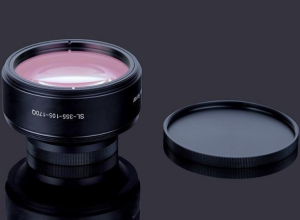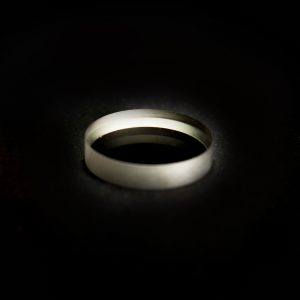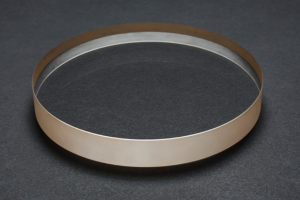In the optical path system of a laser marking machine, there are important optical devices such as field mirrors, beam expanders, and galvanometers. What is the relationship between them and the issues that need attention in matching? Let’s take a look at them:
Field mirror: Laser equipment mainly consists of a component called a field mirror. It is to determine the laser working range of the laser marking machine. Mainly used to focus the light from the galvanometer on a plane. A simple point is a focal lens, while a complex point is a lens in which every point within a specified plane of its focal length position is a focal point. The field mirror has a parameter called the entrance pupil, also known as the entrance pupil. For the entrance pupil, we require that the entrance pupil of the field mirror be ≥ the spot of the galvanometer. If the entrance pupil of the field mirror is smaller than the spot of the galvanometer, it may occur. When marking the edge of the field mirror, the edge will be marked significantly shallower than the middle position, and even the range that can be reached will be smaller than the range of the field mirror label.
Beam expander: When it comes to beam expanders, they are actually two lenses with different focal lengths. When laser equipment is used for remote illumination or projection, as well as related aspects of focusing systems. An important component of the laser in a laser marking machine is called a laser beam expander, which plays a very important role. A beam expander is an optical device that expands a laser beam. The product of the laser beam waist radius and the divergence angle is a constant value. When a laser beam passes through an X times beam expander, its waist radius increases by X times, but the divergence angle of the beam decreases to 1/X of the original. When a laser beam with a small divergence angle passes through a focusing lens of the same specification, the focus point obtained will be smaller. The role of a beam expander is as follows:
: Make the focusing effect better and obtain a smaller focus spot. The greater the magnification, the better the focusing effect of the light from the beam expander.
Second: Distribute energy evenly to reduce the energy density reaching the resonator or mirror, making the resonator or 45 degree mirror more durable.
Third: Amplifying the beam, which is mainly reflected in laser performance systems. Although we amplify the beam every time in industrial processing systems, our purpose is not only to amplify the beam, but also for the first two purposes. The purpose of using a beam expander in laser performance systems is to enlarge the beam.
Galvanometer: Galvanometer is basically two ammeters and a pointer tied to an X Y lens, and the number of galvanometer spots (10 spots, 12 spots, 20 spots, etc.) means how much light can be reflected by the area of this galvanometer. The smaller the galvanometer lens, the smaller the light beam that can be reflected; The larger the galvanometer lens, the greater the beam of light that can be reflected. However, we should note that the larger the lens of the galvanometer, the greater the weight of the galvanometer lens. When something with greater weight moves, the greater the inertia. The greater the inertia, the faster the speed of our galvanometer inevitably becomes. Why choose large vibration lenses? “Because in order to obtain a beam with a smaller divergence angle, a large magnification beam expander is used, and if a large magnification beam expander is used, a large beam will inevitably emerge, and the large beam must be reflected by the corresponding galvanometer.”. However, line fineness and marking speed are a contradiction, and we can only choose between them based on our needs, not both.




